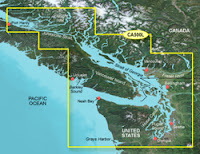- September 12th - September 16th, 2012 – Seattle Boats Afloat Show, South Lake Union, Seattle, WA. The largest on the water show in the Northwest! Look for Gateway and Aspen to each have a C90 on display, on the water, side by side. You want a whole Aspen, talk directly to the folks who make them! You want a fraction of an Aspen, talk to Gateway! It’s a great show and it’s going to be a fun time. Call today to get your VIP tickets courtesy of Gateway Yachts!
- September 28th – September 30th, 2012 – Anacortes Fall Boat Show, Cap Sante Marina, Anacortes, WA. A terrific venue for the locals, and the close out show to a terrific year of boating. See you there!
- January 25th – February 3rd, 2013 – Seattle Boat Show, Century Link Field, Seattle, WA. Biggest show on the West Coast, a don’t miss show. Exciting show for both Aspen and Gateway as we will be taking up far more floor space with multiple boats and a full-scale mockup of the new 36′ Aspen Power Cat. Call or contact us for VIP passes. Don’t miss it, and we’ll see you there!







_250x220.jpg)
